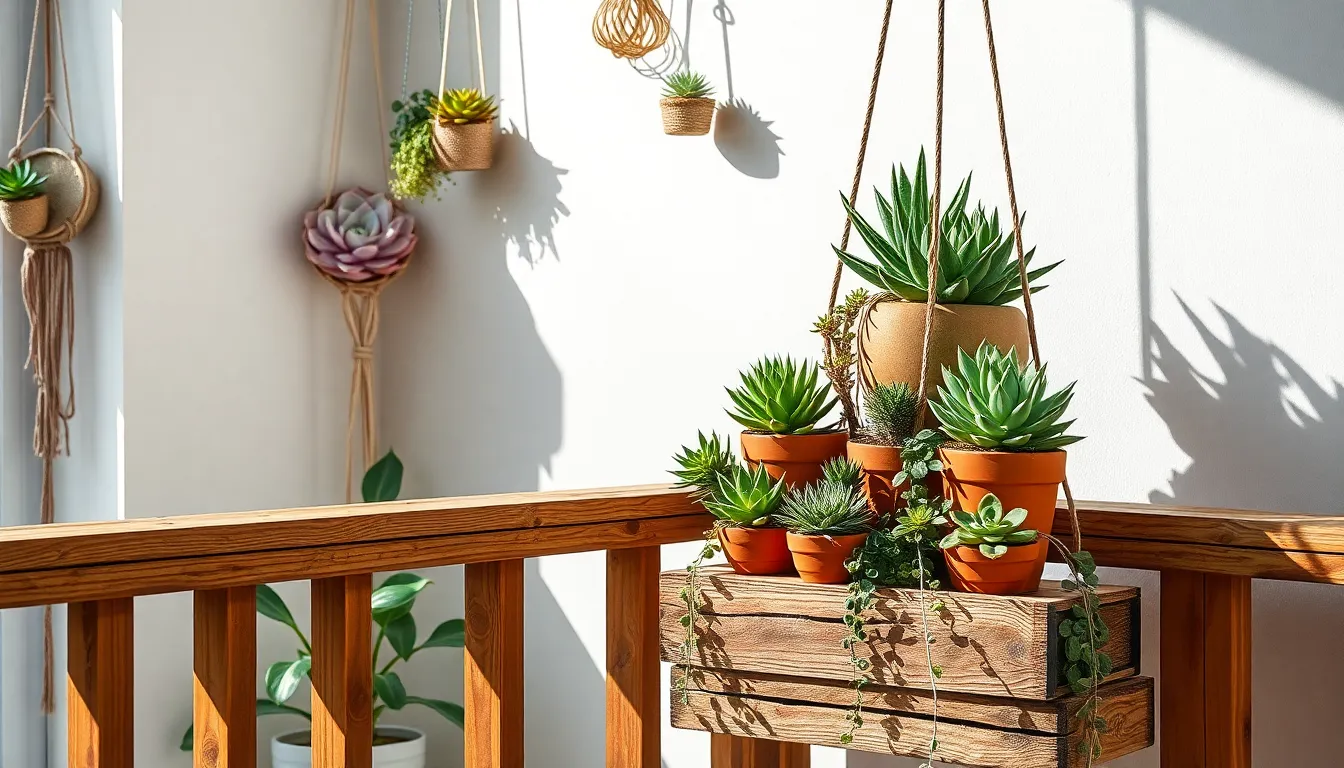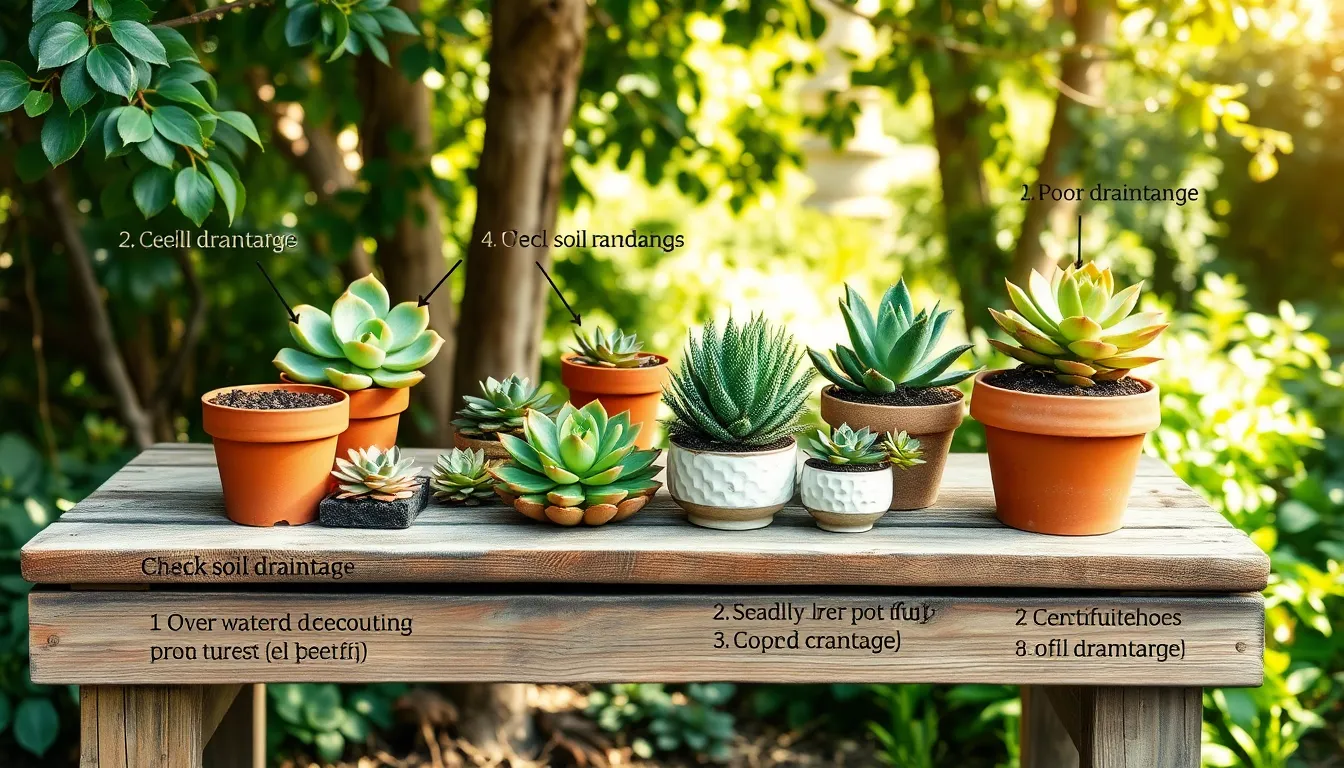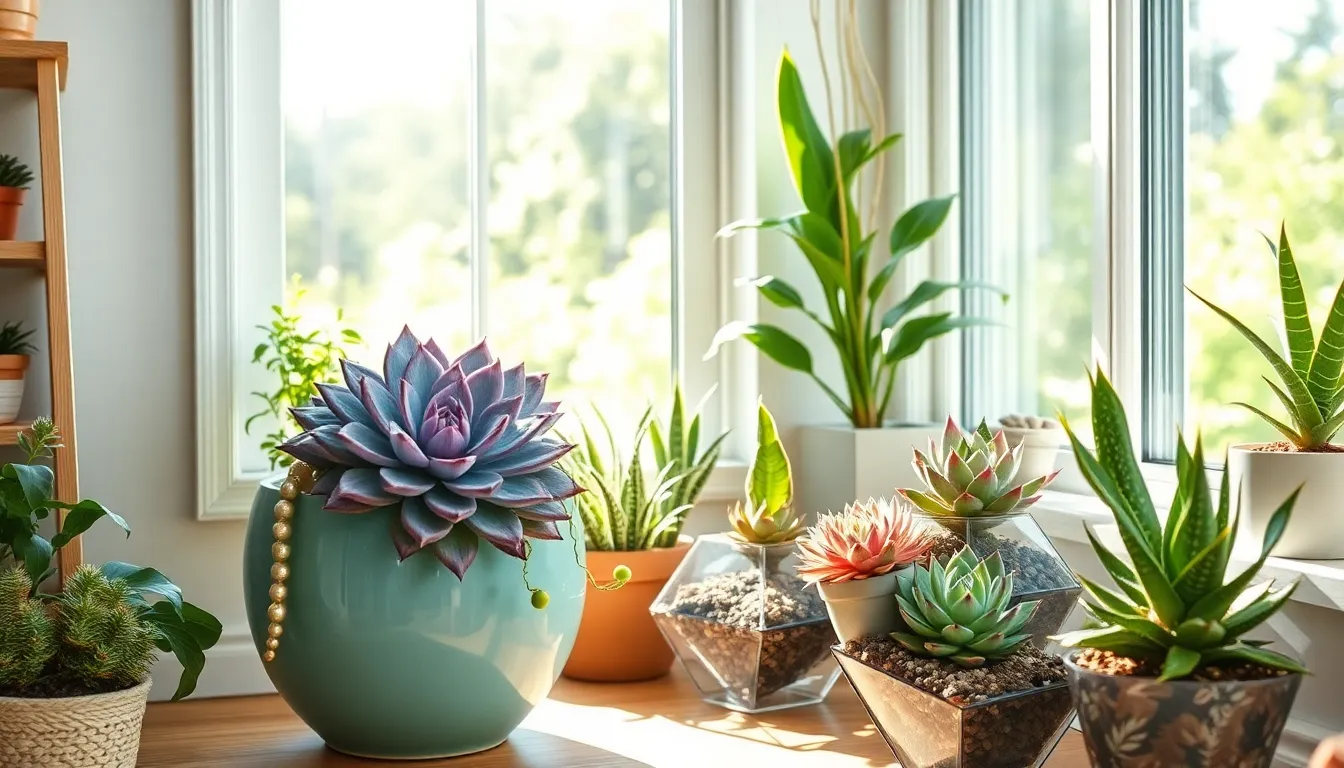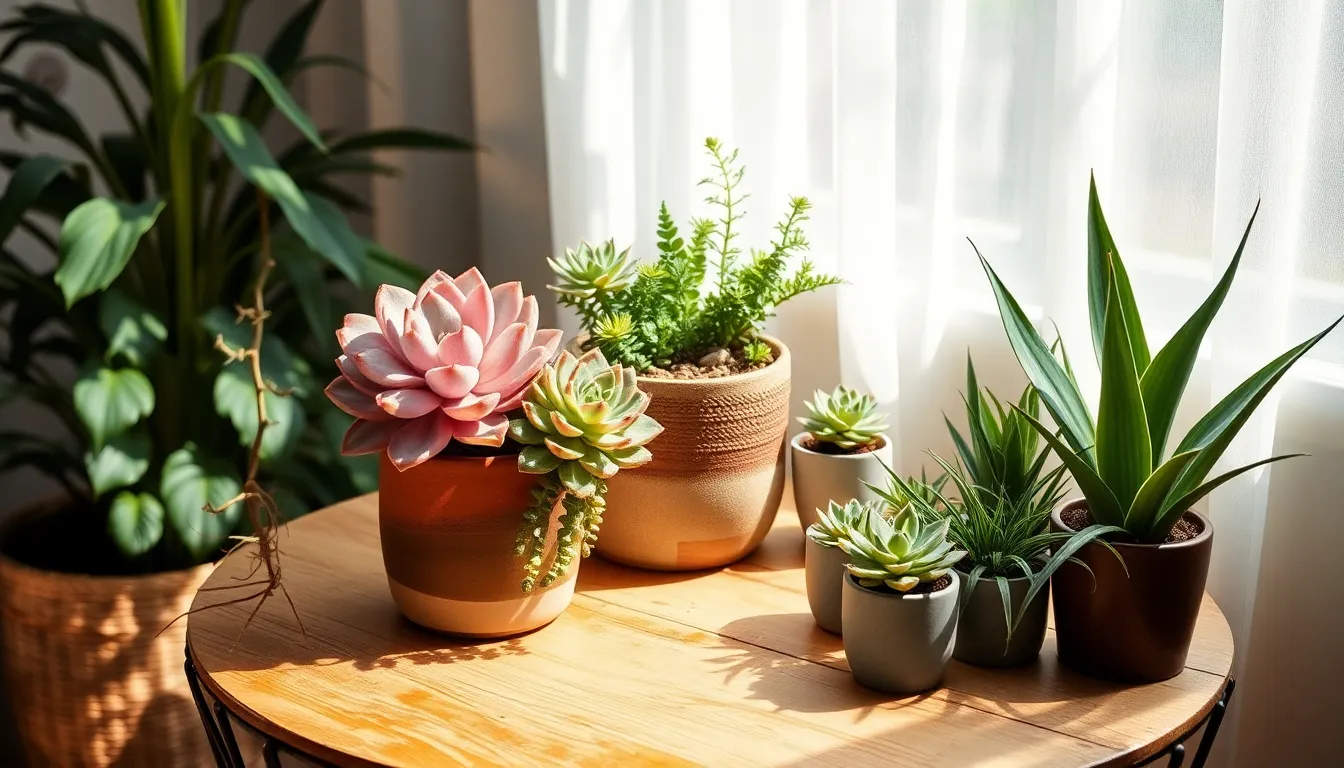Stepping into the world of succulent gardening is like opening a door to a universe of vibrant possibilities, especially for those nestled within the cozy confines of a small apartment. Whether you’re a novice just feeling your way through the first few pots or an experienced green thumb looking to diversify your indoor oasis, succulents offer a unique blend of beauty and resilience that can transform even the most limited spaces.
These remarkable plants, with their diverse shapes and colors, have carved out a niche as the perfect companions for compact living. Not only do they require minimal care, but they also thrive in environments where other plants might struggle, making them ideal for urban dwellers seeking a touch of nature’s tranquility. In this article, we’ll explore the fundamental techniques for selecting, planting, and nurturing succulents, ensuring they flourish within the constraints of your apartment.
Prepare to delve into the joys of creating a lush succulent garden that suits your lifestyle, whether you have a sunny windowsill or a dimly lit corner. You’ll discover practical tips for choosing the right containers, understanding watering schedules, and ensuring your plants receive the right amount of light. By the end of this guide, you’ll be equipped with the knowledge to cultivate a thriving succulent collection, adding a splash of green to your urban sanctuary.
Choosing Compact Succulent Varieties
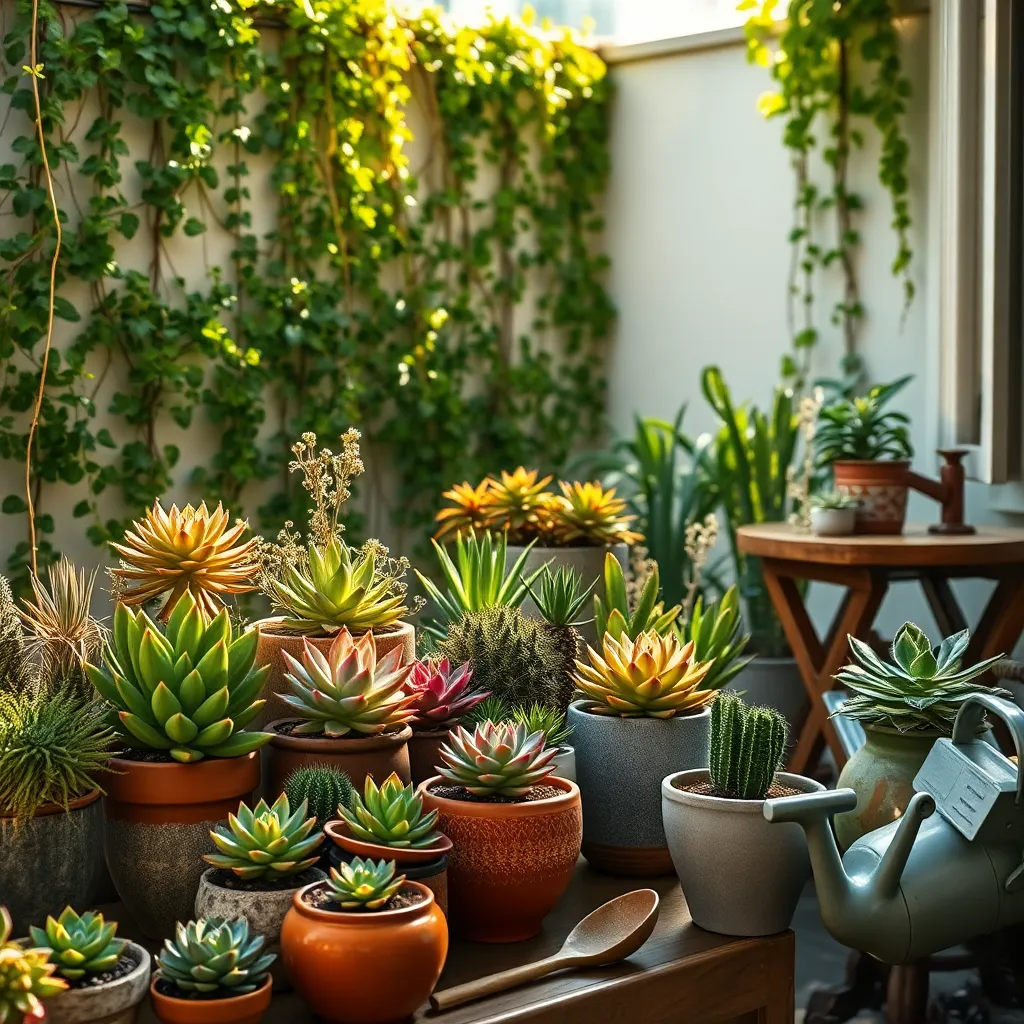
When choosing compact succulent varieties for your small apartment, consider plants that thrive in limited spaces without sacrificing aesthetic appeal. Jade Plant (Crassula ovata) is an excellent option, as it can adapt to various lighting conditions and grows slowly, making it easy to manage.
Another ideal choice is the Haworthia, known for its rosette shape and minimal care requirements. These succulents prefer bright, indirect light and only need watering once every two weeks, making them perfect for busy individuals or beginners.
For those looking for a touch of color, the Echeveria offers vibrant hues and compact growth. It thrives in well-draining soil, such as a cactus mix, and requires only occasional watering when the soil is completely dry.
To ensure your succulents remain compact and healthy, avoid overwatering, which can lead to root rot. Instead, use a pot with drainage holes and water thoroughly but infrequently, allowing the soil to dry out completely between waterings.
Ideal Light Conditions for Apartments
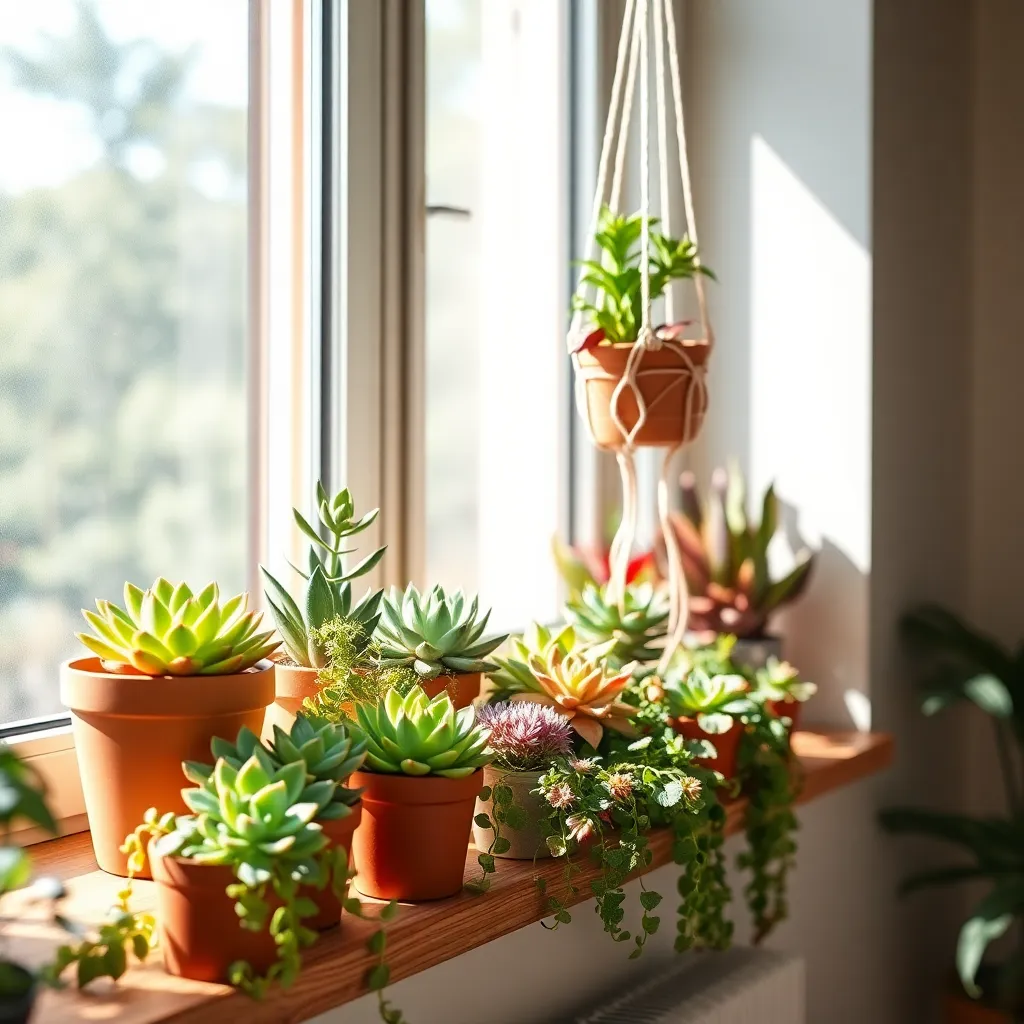
When growing succulents in small apartments, providing the right light conditions is crucial for their health and growth. Most succulents thrive in bright, indirect light, so placing them near a south or east-facing window is ideal.
For apartments with limited natural light, consider using grow lights specifically designed for succulents. LED grow lights are energy-efficient and can be adjusted to provide the necessary light spectrum that mimics natural sunlight.
Beginners should monitor their succulents for signs of inadequate light, such as stretching or loss of color. On the other hand, advanced gardeners can experiment with rotating their plants periodically to ensure even growth.
It’s important to remember that while succulents love light, direct sunlight can sometimes scorch their leaves, especially in hot climates. To prevent this, use sheer curtains to diffuse the light or gradually acclimate your plants to direct sun exposure.
Space-Saving Potting Solutions
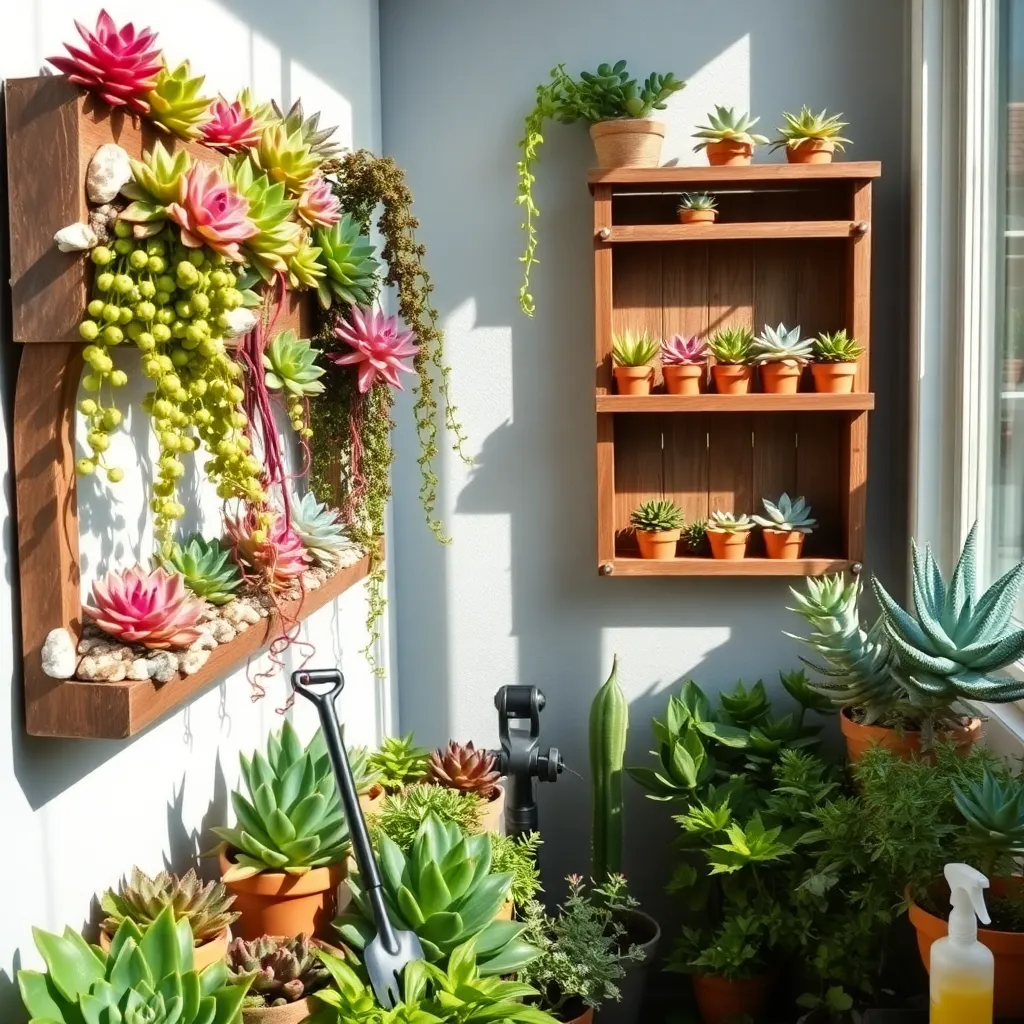
Creating a succulent garden in a small apartment requires innovative space-saving solutions. Vertical gardens are an excellent option, allowing you to utilize wall space effectively without sacrificing floor area.
Opt for hanging planters or wall-mounted pots to maximize your vertical space. These setups not only save room but also make a stylish statement in your home.
For those with limited light, consider using tiered plant stands placed near your brightest window. This method ensures that each succulent receives adequate sunlight while maintaining an organized and compact display.
Additionally, smaller pots can be clustered together on shelves or windowsills to create a lush, green look without crowding your living space. Choose shallow pots with good drainage to prevent overwatering, which is a common issue with succulents.
When selecting soil, use a well-draining cactus mix to keep your succulents healthy and thriving. Water sparingly, approximately once every two weeks, or when the soil feels completely dry to the touch.
Advanced gardeners might experiment with creative planting arrangements, such as planting succulents in repurposed or upcycled items like teacups or small baskets. These unique containers add a personal touch and can be easily rearranged to suit your space needs.
Efficient Watering Tips for Indoors
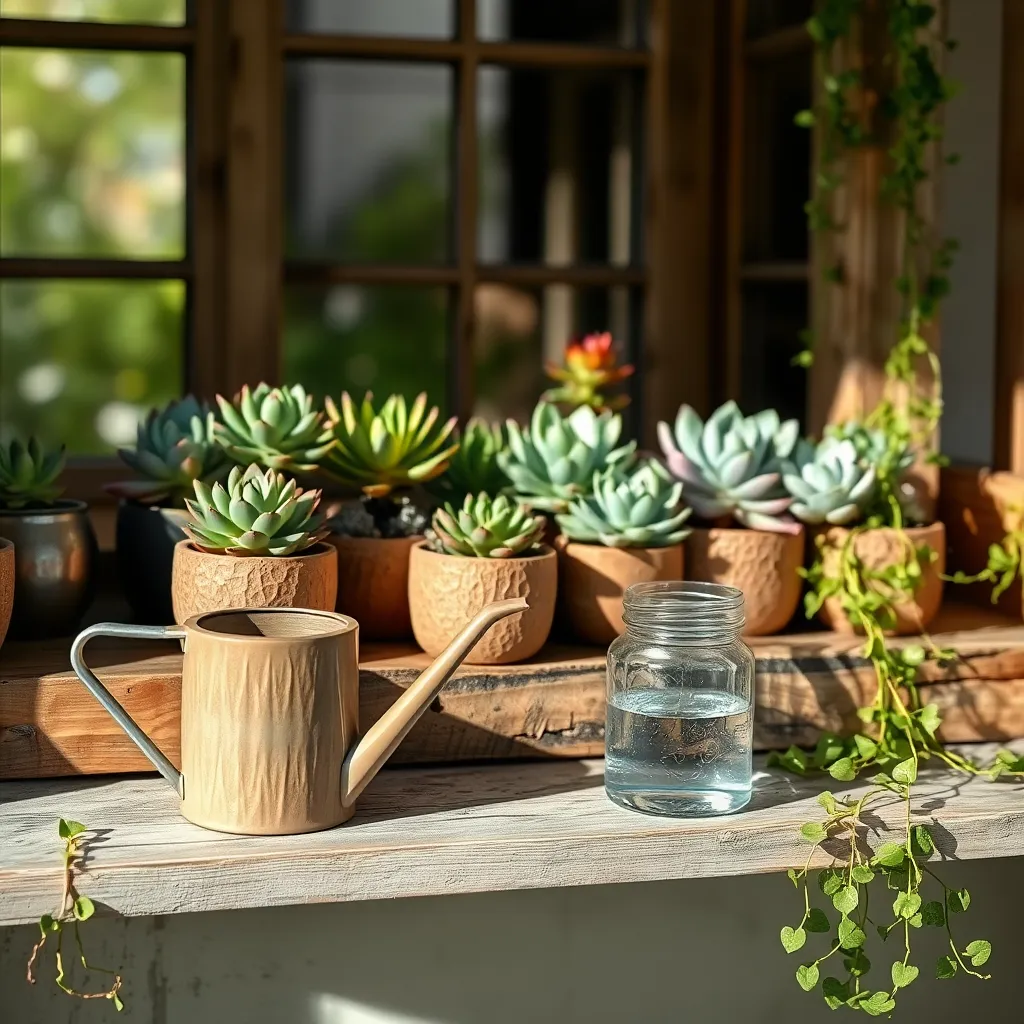
Ensuring your succulents thrive in a small apartment begins with understanding their water needs. Succulents store water in their leaves, so they require less frequent watering than other plants. Let the soil dry out completely between waterings to prevent root rot. To check if it’s time to water, insert your finger about an inch into the soil; if it’s dry, your plant is ready for a drink.
Using the right soil mix is also crucial for efficient watering. Opt for a well-draining succulent or cactus soil, which often contains sand or perlite to help excess water escape quickly. This type of soil mimics their natural habitat and reduces the risk of overwatering. Consider adding pebbles at the bottom of the pot to further enhance drainage.
Advanced gardeners can experiment with bottom watering to encourage healthy root growth. Place the pot in a shallow dish of water and allow the soil to absorb moisture through the drainage holes. This method ensures the roots receive adequate moisture while keeping the leaves dry, which is beneficial for preventing fungal issues.
It’s essential to adjust your watering schedule based on the season and indoor climate. During winter, when succulents enter a dormant phase, reduce watering frequency as the plant’s growth slows. In warmer months, increase watering slightly to accommodate the plant’s increased metabolic activity. Observing your plant’s appearance will also provide clues—wrinkled leaves may indicate a need for water, while mushy leaves signal overwatering.
Arranging Succulents for Aesthetic Appeal
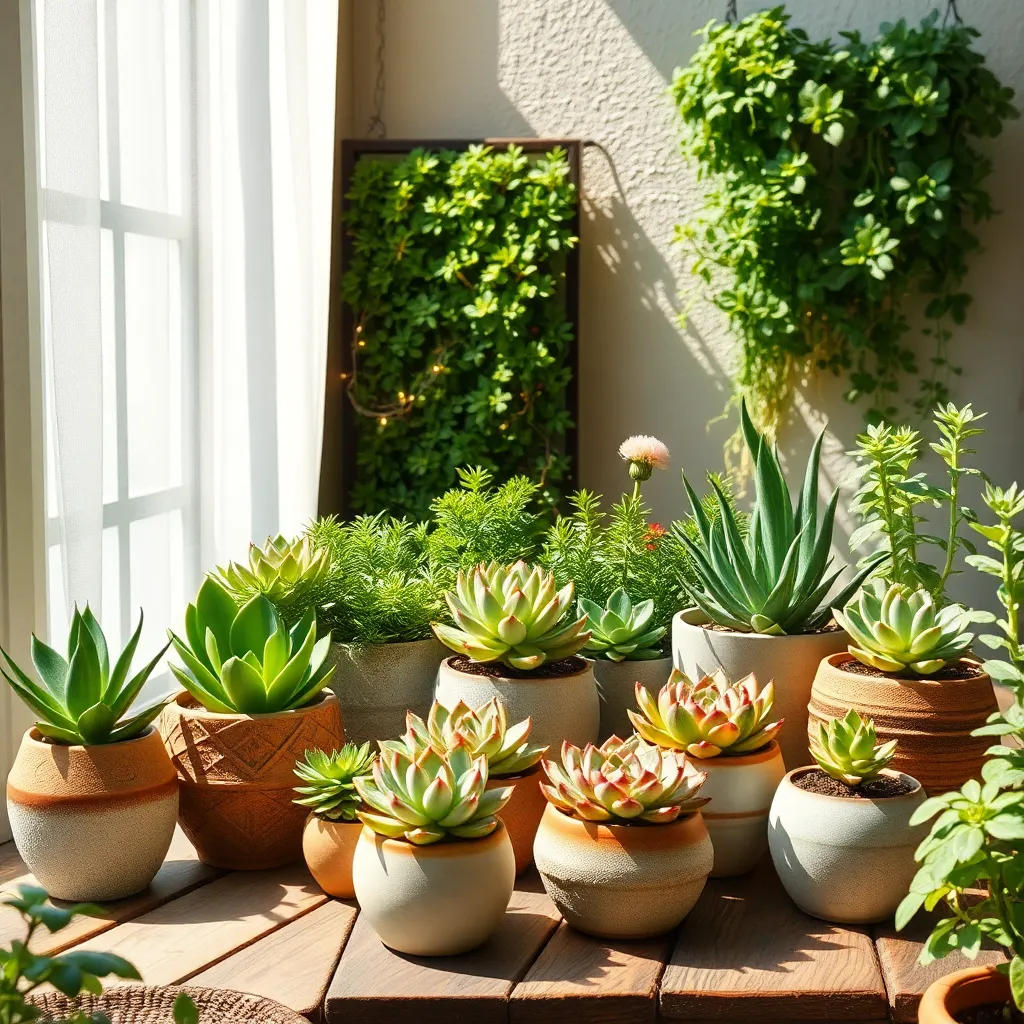
Arranging succulents for aesthetic appeal involves a balance of color, texture, and form. Start by selecting a variety of succulents with different shapes and hues to create visual interest. Consider using a mix of rosette-shaped succulents like echeveria and spiky varieties like aloe for contrast. This diversity not only enhances the look but also ensures a dynamic arrangement.
When planning your arrangement, think about the size and growth habits of each plant. Place taller succulents like jade plants at the back or center of your container to create depth. Smaller, trailing succulents such as string of pearls can be positioned near the edges to cascade gracefully over the sides. This layering technique adds dimension and makes your display more engaging.
Choosing the right container is essential for both aesthetics and plant health. Opt for a shallow, wide container that offers enough space for your succulents to spread out while maintaining a neat appearance. Ensure the container has good drainage holes, as succulents require well-draining soil to prevent root rot. Use a cactus soil mix, or create your own by combining potting soil with sand or perlite for optimal drainage.
Consider the lighting needs of your succulents when arranging them in your apartment. Most succulents thrive in bright, indirect sunlight, so place them near a window that receives ample light throughout the day. Rotate your arrangement every few weeks to ensure all sides receive equal light exposure, preventing the plants from leaning towards the light source. This practice not only promotes even growth but also maintains the symmetry of your arrangement.
Conclusion: Growing Success with These Plants
In “Succulent Gardening for Small Apartments,” we’ve explored five essential relationship concepts: the importance of nurturing your bond, the power of space and individuality, the beauty of growth through challenges, the role of patience and persistence, and the joy of sharing life’s little victories. These principles not only apply to cultivating a thriving succulent garden but also to fostering a healthy and vibrant relationship.
As a next step, consider selecting a succulent together with your partner. Use this as a symbol of your commitment to nurture and grow your relationship. Cultivating this plant will serve as a daily reminder of the attention and care your relationship deserves.
Remember to bookmark this article for future reference, as revisiting these concepts can provide fresh insights and encouragement when needed. By integrating these lessons into your relationship, you’re setting the stage for a flourishing partnership that thrives on mutual growth and understanding.
Relationships, like gardens, require time, attention, and love to blossom. With dedication and care, you can create a relationship that not only survives but thrives amidst life’s challenges. Embrace the journey and watch your connection grow stronger every day.

